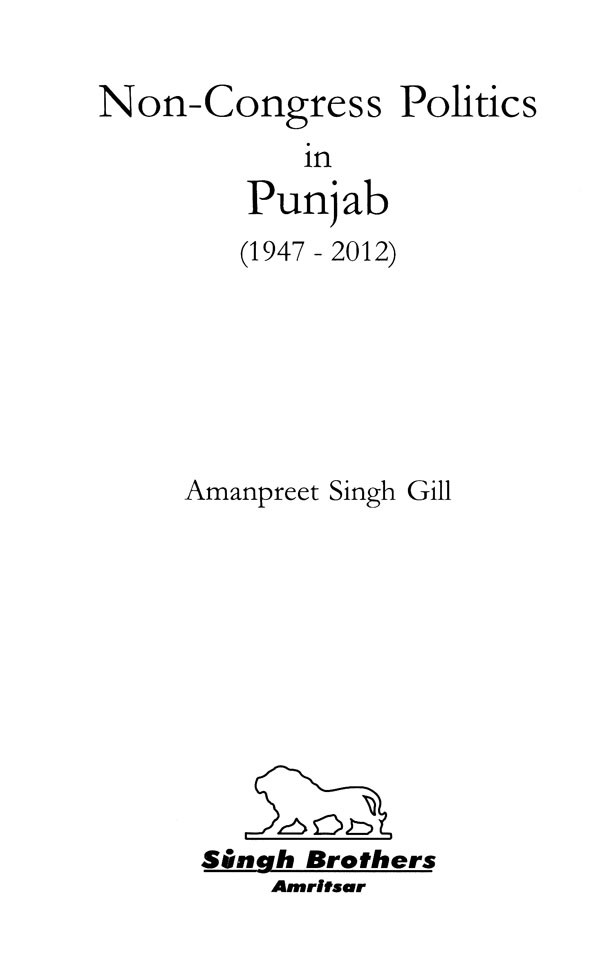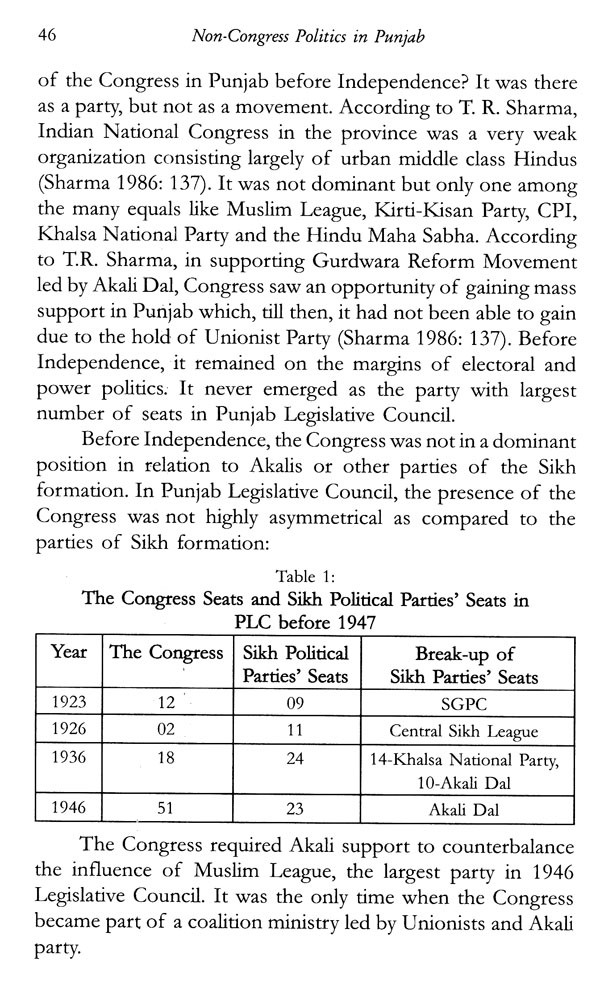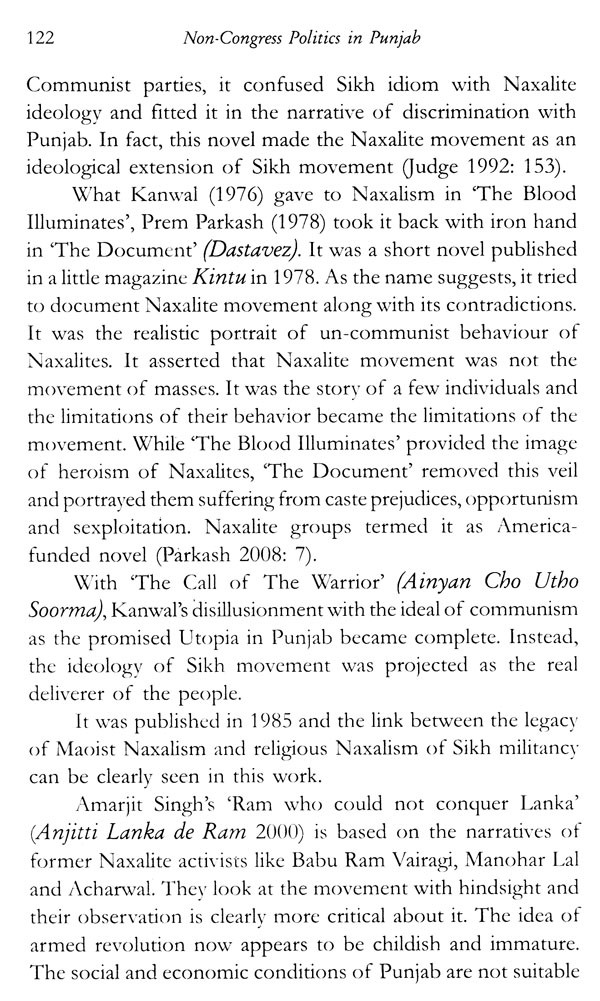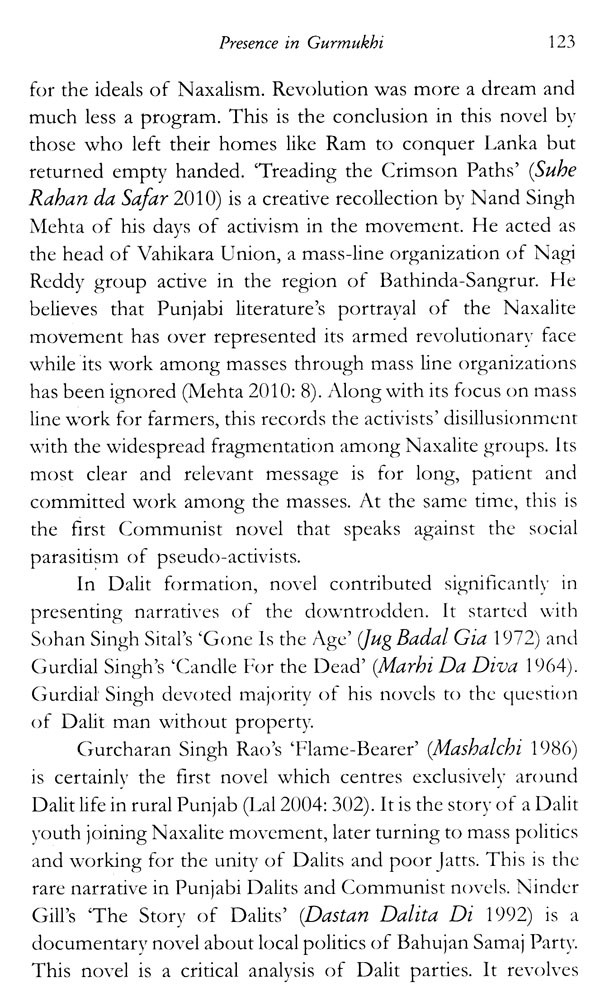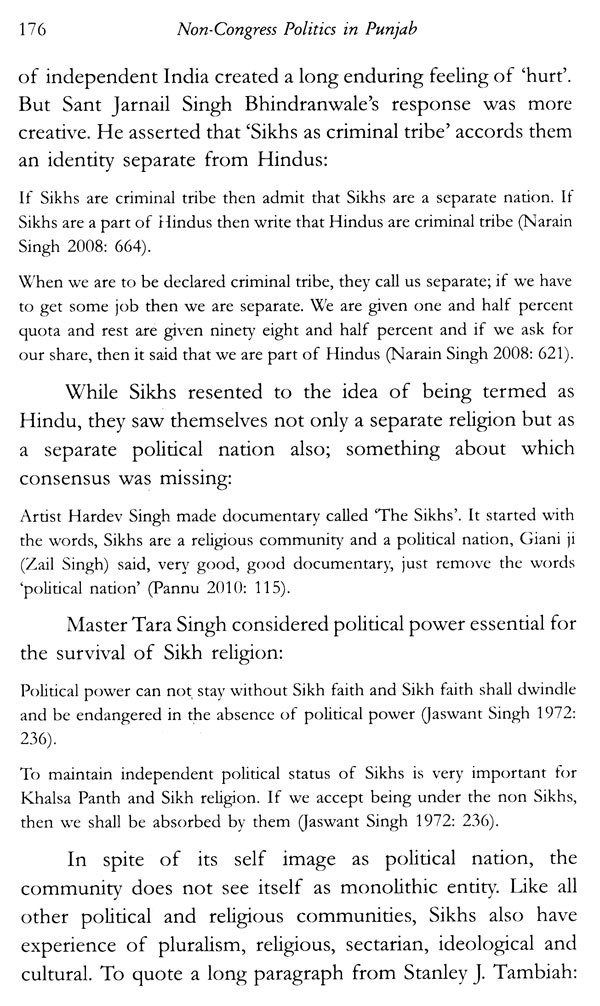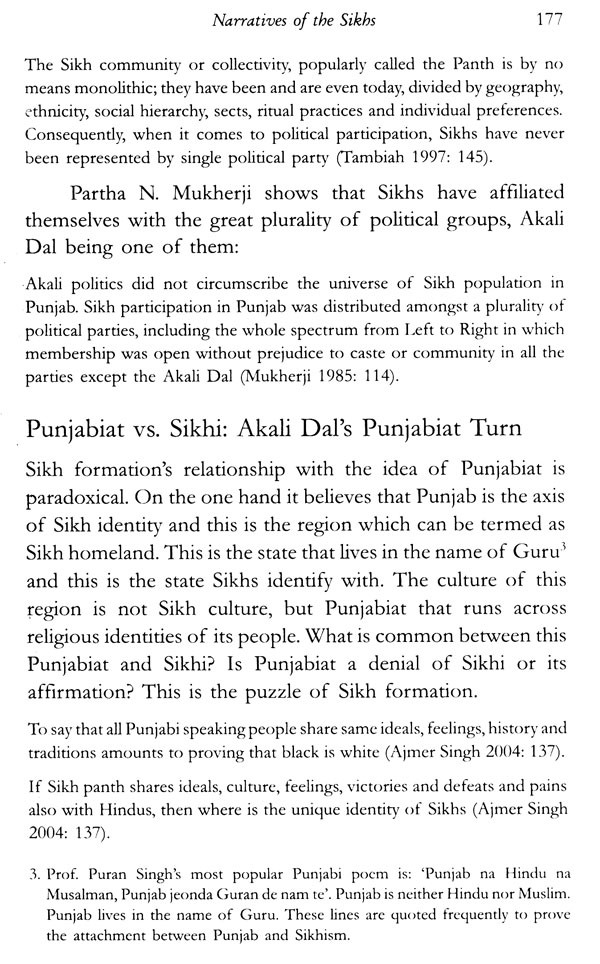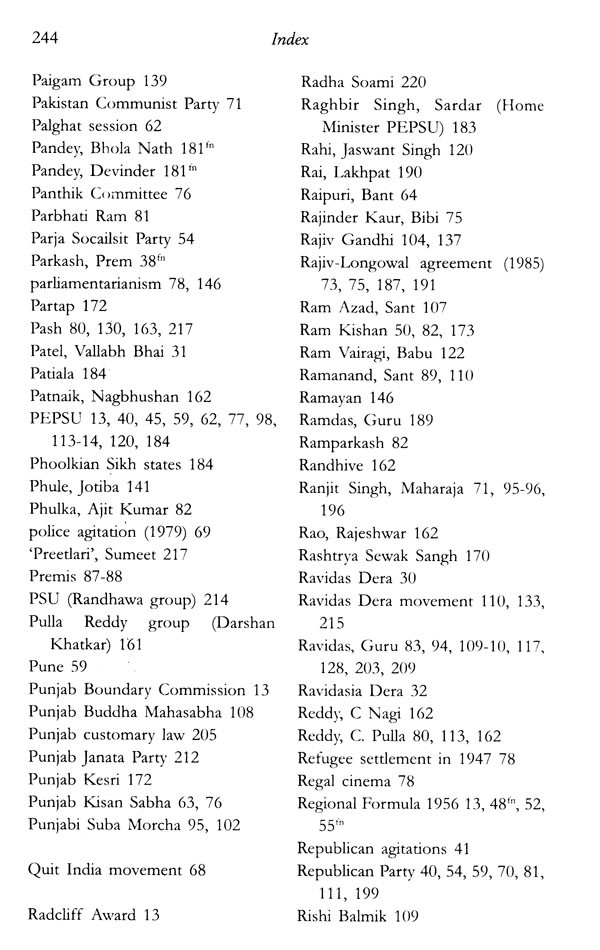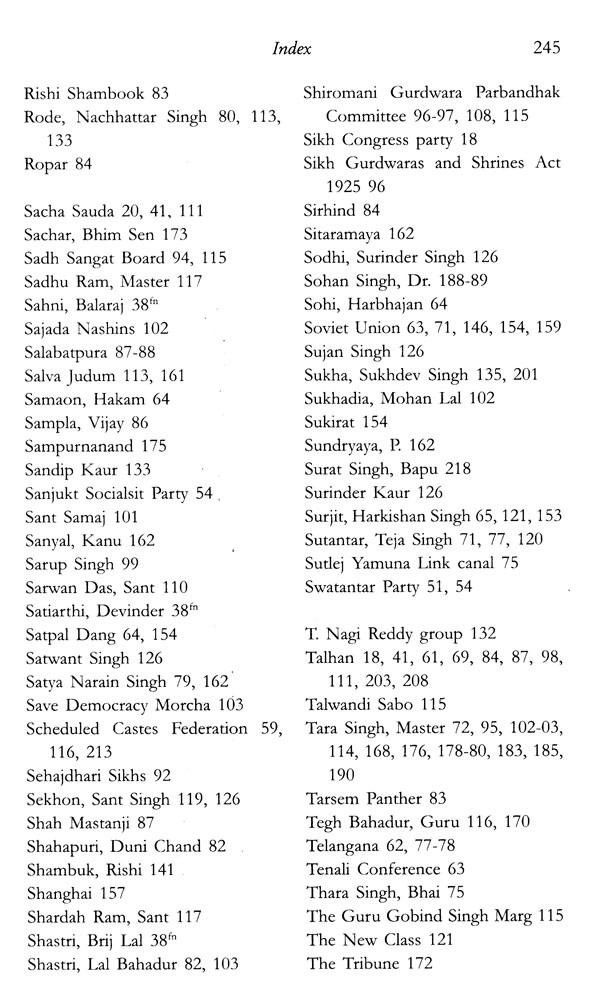
Non-Congress Politics in Punjab (1947-2012)
Book Specification
| Item Code: | UAZ963 |
| Author: | Amanpreet Singh Gill |
| Publisher: | Singh Brothers, Amritsar |
| Language: | English |
| Edition: | 2015 |
| ISBN: | 9788172055479 |
| Pages: | 246 |
| Cover: | HARDCOVER |
| Other Details | 9.50 X 6.50 inch |
| Weight | 500 gm |
Book Description
Radical Sikhs, Dalits and Leftist formations remained persistent electoral under-achievers. They have been on the periphery of power politics for the last 66 years. The puzzle is that how do they retain their relevance in politics without power?
Amanpreet Singh Gill, in this book, seeks to explore the answer to this puzzle. Despite being electoral underachievers, Non- Congress formations in Punjab have strong presence in the arena of culture. They have gained mass participation/support in various agitations since 1947. In the arena of religion, they are like a fish in water. They live in the world of such narratives which make their lives without political power meaningful and sublime. Gurmukhi print communicates these narratives in permanent ink and the memory's relation with politics becomes indelible. Author believes that the path to understanding the complexity of Politics in Punjab lies through Gurmukhi print. This book is the outcome of this belief.
Currently, he is teaching Political Science as Assistant Professor at SGTB Khalsa College, North campus, University of Delhi. He is living with his wife and daughter.
In a short period of two decades, Punjab faced three interventions in the form of partition (1947), merger (1956) and reorganization (1966). These interventions caused drastic changes. Territory, geography, topography, demography, administration, politics, religion, caste, language, education, security and economy - everything changed with this frequent change in the boundaries of the Punjab. As a result, it became a handmade state shorn of its natural and geographical regions.
These frequent territorial changes resulted into almost dramatic change of demographic composition of Punjab.
**Contents and Sample Pages**
